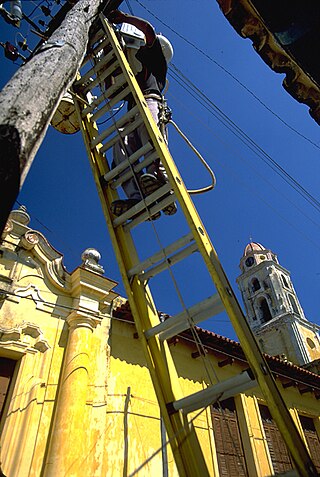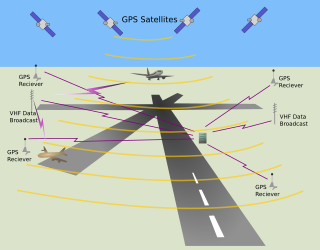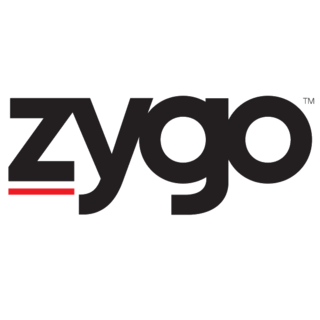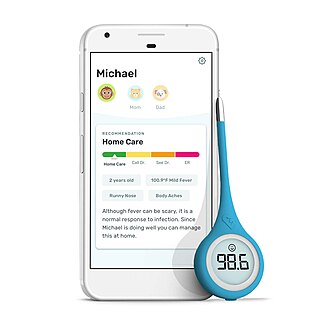
Daniel Gabriel Fahrenheit FRS was a physicist, inventor, and scientific instrument maker, born in Poland to a family of German extraction. Fahrenheit invented thermometers accurate and consistent enough to allow the comparison of temperature measurements between different observers using different instruments. Fahrenheit is also credited with inventing mercury-in-glass thermometers more accurate and superior to spirit-filled thermometers at the time. The popularity of his thermometers led to the widespread adoption of his Fahrenheit scale attached to his instruments.

The Fahrenheit scale is a temperature scale based on one proposed in 1724 by the European physicist Daniel Gabriel Fahrenheit (1686–1736). It uses the degree Fahrenheit as the unit. Several accounts of how he originally defined his scale exist, but the original paper suggests the lower defining point, 0 °F, was established as the freezing temperature of a solution of brine made from a mixture of water, ice, and ammonium chloride. The other limit established was his best estimate of the average human body temperature, originally set at 90 °F, then 96 °F.

A thermometer is a device that measures temperature or temperature gradient. A thermometer has two important elements: (1) a temperature sensor in which some change occurs with a change in temperature; and (2) some means of converting this change into a numerical value. Thermometers are widely used in technology and industry to monitor processes, in meteorology, in medicine, and in scientific research.

A ladder is a vertical or inclined set of rungs or steps commonly used for climbing or descending. There are two types: rigid ladders that are self-supporting or that may be leaned against a vertical surface such as a wall, and rollable ladders, such as those made of rope or aluminium, that may be hung from the top. The vertical members of a rigid ladder are called stringers or rails (US) or stiles (UK). Rigid ladders are usually portable, but some types are permanently fixed to a structure, building, or equipment. They are commonly made of metal, wood, or fiberglass, but they have been known to be made of tough plastic.

The mercury-in-glass or mercury thermometer is a thermometer that uses the thermal expansion and contraction of liquid mercury to indicate the temperature.

A hygrometer is an instrument which measures the humidity of air or some other gas: that is, how much water vapor it contains. Humidity measurement instruments usually rely on measurements of some other quantities such as temperature, pressure, mass, and mechanical or electrical changes in a substance as moisture is absorbed. By calibration and calculation, these measured quantities can be used to indicate the humidity. Modern electronic devices use the temperature of condensation, or they sense changes in electrical capacitance or resistance.

A Galileo thermometer is a thermometer made of a sealed glass cylinder containing a clear liquid and several glass vessels of varying density. The individual floats rise or fall in proportion to their respective density and the density of the surrounding liquid as the temperature changes. It is named after Galileo Galilei because he discovered the principle on which this thermometer is based—that the density of a liquid changes in proportion to its temperature.

A Stevenson screen or instrument shelter is a shelter or an enclosure used to protect meteorological instruments against precipitation and direct heat radiation from outside sources, while still allowing air to circulate freely around them. It forms part of a standard weather station and holds instruments that may include thermometers, a hygrometer, a psychrometer, a dewcell, a barometer, and a thermograph.

A thermodynamic instrument is any device for the measurement of thermodynamic systems. In order for a thermodynamic parameter or physical quantity to be truly defined, a technique for its measurement must be specified. For example, the ultimate definition of temperature is "what a thermometer reads". The question follows – what is a thermometer?

An infrared thermometer is a thermometer which infers temperature from a portion of the thermal radiation sometimes called black-body radiation emitted by the object being measured. They are sometimes called laser thermometers as a laser is used to help aim the thermometer, or non-contact thermometers or temperature guns, to describe the device's ability to measure temperature from a distance. By knowing the amount of infrared energy emitted by the object and its emissivity, the object's temperature can often be determined within a certain range of its actual temperature. Infrared thermometers are a subset of devices known as "thermal radiation thermometers".
A medical thermometer or clinical thermometer is a device used for measuring the body temperature of a human or other animal. The tip of the thermometer is inserted into the mouth under the tongue, under the armpit, into the rectum via the anus, into the ear, or on the forehead.

In the United States Armed Forces, the joint precision approach and landing system (JPALS) is an all-weather system for precision guidance of landing aircraft. It is based on real-time differential correction of the Global Positioning System (GPS) signal, augmented with a local area correction message, and transmitted to the user via secure means. It is used on terrestrial airfields as well as the US Navy's amphibious assault ships and aircraft carriers.
Extech Instruments is a supplier of handheld electronic test equipment and measuring instruments. It is based in Nashua, New Hampshire with design, manufacturing, and warehousing facilities in Hong Kong and Taiwan and a sales office in Shanghai.

Zygo Corporation, or simply Zygo, is a manufacturer headquartered at Middlefield, Connecticut, that specializes in optical systems and equipment. Their metrology product lines include 3D measuring microscopes using coherence scanning interferometry, laser Fizeau interferometers for testing optical components, laser displacement interferometers, and heterodyne optical encoders for stage position metrology. Zygo's optics business manufactures both optical assembly and custom optics for medical instruments and national labs. Over 750 patents have been awarded since the Company's founding.
Electronic Temperature Instruments Limited (ETI) is a worldwide manufacturer and distributor of thermometers and portable test and measurement instrumentation. ETI supplies catering, industrial, HVAC, wireless, legionnaires, refrigeration thermometers and environmental monitoring instruments to various industries. These include food production, chemical, pharmaceutical and construction services.

Prestolite Electric Incorporated is a global manufacturer and supplier of alternators, starters, electrical equipment, and services to the transportation, industrial, military, marine, agricultural and construction industries. The company sells its products to United States defense agencies, OEMs, and aftermarket suppliers under the Indiel, Leece-Neville, and Prestolite Electric brand names. The company operates production and engineering facilities in China, Europe and the United States. Prestolite Electric is privately owned by Broad Ocean Motors. 1990 filed bankruptcy and new entity established. The Prestolite name was taken thru the process as the name had market value
Taylor Hobson is an English company founded in 1886 and located in Leicester, England. Originally a manufacturer of still camera and cine lenses, the company now manufactures precision metrology instruments—in particular, profilometers for the analysis of surface textures and forms.
AMETEK, Inc. is an American multinational conglomerate and global designer and manufacturer of electronic instruments and electromechanical devices with headquarters in the United States and over 220 sites worldwide.

Kinsa Inc. is a health technology company with a powerful and robust AI platform that provides predictive insights for pharmaceutical companies, retailers, illness product companies, public health agencies, hospital systems, and communities. Kinsa aims to stop the spread of infectious illness through a network of smart thermometers that power their Insights platform.













